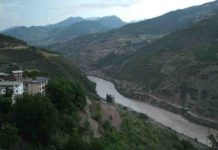
River deltas, low-lying landforms that host critical and diverse ecosystems as well as high concentrations of human population, face an uncertain future. Even as some deltas experience decreased sediment supply from damming, others will see increased sediment discharge from land-use changes. Accurate estimates of the current rate of subsidence in the Mississippi Delta (southern USA) are important for planning wetland restoration and predictions of storm surge flooding.
Parts of coastal Louisiana (southern USA) are undergoing accelerated land loss due to the combined effects of sea-level rise and land subsidence. In the Mississippi Delta, where rates of land loss are especially severe, subsidence of the land surface reflects natural processes, such as sediment compaction and crustal loading, but this is exacerbated by anthropogenic withdrawal of fluids (water, oil, natural gas).
In this study for Geology, Makan Karegar and colleagues use precise Global Positioning System (GPS) data to measure subsidence rates of the Mississippi Delta. They also use tide gauge records to better understand the relationship between subsidence and sea-level rise in southern Louisiana.
The authors show that while the majority of the delta is relatively stable, parts of the delta may not be viable in the long term. The southern portion of the delta continues to experience high rates of subsidence (5 to 6 mm per year). The current rate of relative sea-level rise (the combined effect of land subsidence and sea-level rise) along parts of the coastal delta is nearly 8 to 9 mm per year.
Given stable sea level and sediment deposition, a delta will tend toward an equilibrium state where subsidence is more or less balanced by sediment deposition. In the Mississippi River system, however, a series of dams on various upstream tributaries have reduced sediment supply to the delta, while levees on the lower part of the river have artificially channelized the flow, forcing sediments to be deposited beyond the delta in the deeper Gulf of Mexico.
The data presented by Karegar and colleagues have implications for land reclamation and wetland restoration in the region. Mitigation efforts may include river diversion to encourage resedimentation, and pumping of offshore sands to restore barrier islands.
Reference:
M. A. Karegar, T. H. Dixon, R. Malservisi. A three-dimensional surface velocity field for the Mississippi Delta: Implications for coastal restoration and flood potential. Geology, 2015; DOI: 10.1130/G36598.1
Note: The above story is based on materials provided by Geological Society of America.










